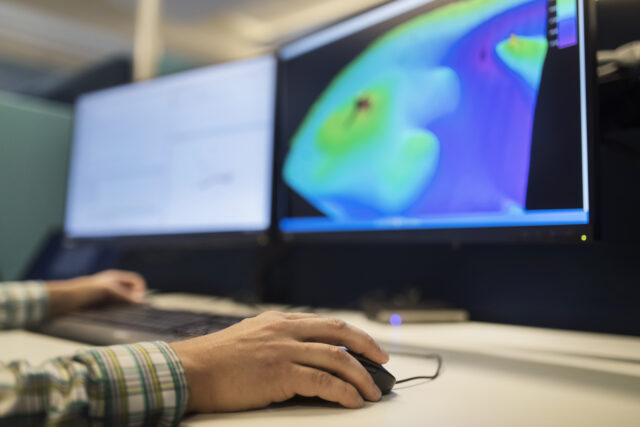Exploration Information System – New Tools for Mineral Exploration
The Exploration Information System (EIS) project will produce new geological models as well as new, fast and cost-effective spatial analysis tools for mineral exploration. The project also aims to increase public awareness of the importance of raw materials to society and build confidence in the exploration and production of these geological raw materials.

The main goal of the EIS project is to produce innovative mineral exploration concepts and spatial data analysis tools. The project produces these tools from idea into practice as an open source package, that includes tools for all stages of mineral prospectivity analysis. The package is published in the form of an EIS QGIS Wizard, which is made on an open source geographic information system (GIS) platform called QGIS.
“We chose an open source GIS platform instead of a commercial one. We believe this will open new possibilities for application development, for example in the form of crowdsourcing. This does not exclude the use of other platforms for applications made in this project. The expected userbase is also wide. However, the use of an open spatial data platform poses its own challenges, as we use QGIS, which is less familiar to researchers at GTK, and we do not have much time in this project to learn something new. Fortunately, we have partners who know QGIS very well”, explains the project`s scientific coordinator, Research Professor Vesa Nykänen from the Geological Survey of Finland (GTK).
Research Focuses on Spatial Data Analysis Tools and Mineral Systems Modelling
The EIS project consists of different components of mineral prospectivity analysis and modelling of mineral systems. In the pre-processing step, the data is converted to describe representatives of the critical parameters of the mineral system. The data is then processed using the predictive modelling method of the integration phase or data analysis methods, resulting in a mineral prospectivity map. In the final step, the mineral prospectivity map is validated using statistical methods to test the success of the modelling. An essential part of the project is also to describe the characteristics of different mineral systems and form a digital library of these, for use in QGIS applications.
“We use selected ore deposits as research and test sites for specific mineral systems and metals. These include cobalt minerals in volcanic massive sulphide ore deposits (VMS), lithium-tin-tantalum and tungsten minerals in granite-pegmatite systems, and REE and cobalt minerals in iron-oxide-copper-gold (IOCG) systems”, Nykänen explains. The research and test sites of the project are located in the Czech Republic, Germany, Spain, Finland, Sweden, France, Brazil and South Africa.
The Three-year Project Starts in June
The project aims to increase the general public’s awareness of the importance of critical raw materials for the European Union by producing information materials related to primary raw materials. The aim is to communicate and raise awareness of the important role of raw materials in our transition to a green future.
The EIS is a project coordinated by GTK and funded by the European Union’s Horizon Europe programme. Horizon Europe projects contribute to a green transition and digitalisation, to achieve the agreed goal of making Europe a climate-neutral continent by 2050. The EIS consortium includes 17 partners from six EU countries, South Africa and one associate partner from Brazil. The budget for the three-year project is 7.5 M €.
The kick-off meeting of the EIS project will be in Rovaniemi on June 7th to June 9th, when a large number of project researchers will gather together to plan future work. The experts of mineral exploration around the world have also been invited to attend the general meeting on June 8th.
The EIS Consortium:
Geologian tutkimuskeskus GTK (Finland)
Beak Consultants GmbH (Germany)
Bureau de Recherches Géologiques et Minières (France)
Luleå tekniska universitet (Sweden)
Agencia Estatal Consejo Superior de Investigaciones Científicas (Spain)
Sveriges geologiska undersökning SGU (Sweden)
Keliber Technology Oy (Finland)
LGI Sustainable Innovation (France)
Gispo Oy (Finland)
University of the Free State (South-Africa)
Turun yliopisto (Finland)
Univerzita Karlova (Czech Republic)
Deutsche Lithium GmbH (Germany)
Cobre Las Cruces (Spain)
Talga Battery Metals AB (Sweden)
Golden Pet (Czech Republic)
Universidade Estadual de Campinas (Brazil)
Additional Information
Scientific coordinator, Research professor Vesa Nykänen, Geological Survey of Finland GTK, tel. +358 29 503 4306, vesa.nykanen@gtk.fi

